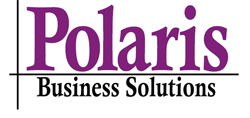Acumatica vs. Dynamics GP: Navigating the Future of ERP Solutions
In the world of Enterprise Resource Planning (ERP) solutions, businesses often find themselves at a crossroads when deciding which platform best suits their needs. Two names that frequently come up in these discussions are Acumatica and Dynamics GP (formerly known as Great Plains). Both have their strengths and weaknesses, but as time goes on, it becomes increasingly apparent that Dynamics GP may be a dying product. In this blog post, we’ll take a closer look at Acumatica and Dynamics GP, comparing their features and capabilities in today’s rapidly evolving ERP landscape.
The Rise of Acumatica
Acumatica, a relatively newer player in the ERP market, has been making waves for several reasons. It is a cloud-based ERP solution, which means it offers scalability, accessibility, and flexibility that on-premises solutions like Dynamics GP struggle to match.
Acumatica was born in the cloud, making it adaptable to modern business requirements. Users can access their data and applications from anywhere with an internet connection, promoting remote work capabilities. Scalability is another significant advantage of Acumatica. Its flexible pricing model and modular design mean you can add or remove functionality as needed, ensuring you only pay for what you use. Also, continuous updates are a hallmark of Acumatica. The platform continually releases updates and enhancements, ensuring that users stay current with the latest technology trends and regulatory changes.
The Decline of Dynamics GP
Dynamics GP, on the other hand, has been around for decades and has a large user base. However, several factors contribute to the perception that it’s a product in decline.
Dynamics GP is an on-premises ERP system with roots dating back to the 1980s. Its architecture and technology stack are showing their age, making it less adaptable to modern business needs.
In recent years, Microsoft, the company behind Dynamics GP, has shifted its focus toward other ERP solutions like Dynamics 365 Business Central. This has resulted in fewer updates and less innovation for Dynamics GP.
Efforts to bring Dynamics GP to the cloud are ongoing, but it lags behind cloud-native solutions like Acumatica, which are inherently designed for the cloud environment.
Choosing the Right ERP Solution
When evaluating ERP solutions like Acumatica and Dynamics GP, it’s essential to consider your business’s current needs and future goals.
For Modern Businesses: If your company is looking for a cloud-native, scalable, and future-proof ERP solution, Acumatica is an excellent choice. Its agility and continuous updates make it well-suited for companies of all sizes and industries.
For Legacy Users: If your business has a long history with Dynamics GP and is hesitant to migrate, it’s crucial to assess your long-term ERP strategy. Sticking with Dynamics GP may require investing in expensive customizations and integrations to remain competitive.
In the ongoing debate of Acumatica vs. Dynamics GP, it’s clear that Acumatica is better aligned with the needs of modern businesses. Its cloud-native architecture, scalability, and continuous updates make it a strong contender in the ERP market. While Dynamics GP may still have its loyal users, its status as a legacy, on-premises solution, coupled with Microsoft’s shifting focus, raises questions about its long-term viability. For businesses looking to thrive in the digital age, Acumatica seems to be the more future-proof choice. Ultimately, the decision between these two ERP solutions will depend on your business’s specific needs, budget, and appetite for technological innovation. However, it’s essential to acknowledge the evolving landscape of ERP software and make an informed choice that positions your organization for success in the years to come.
If you need help choosing a new ERP solution, please contact us; info@polaris-business.com. Polaris Business Solutions is here to help!
